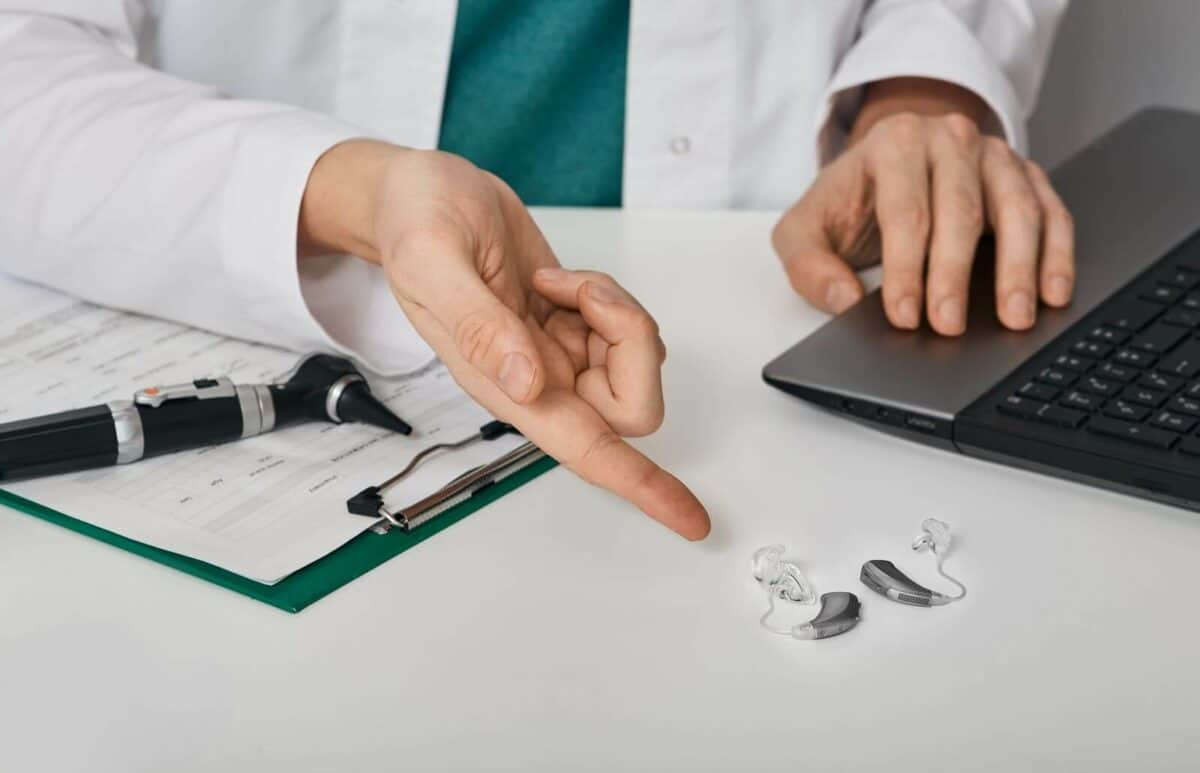With a larger older adult population comes an increase in the demand for hearing aids. The good news is that because of this increase in demand, the market for hearing aids has improved and diversified over the years.
Long gone are the days of clunky, analog hearing aids that your grandparents or even your parents used. Today’s digital hearing aids have not only drastically improved performance, but also come with many options to meet each user’s personal preferences. Let’s look more at the ways digital hearing aids have enhanced the lives of those with hearing loss.
Hearing Loss Treatment
Why are digital hearing aids taking over the market? It’s in the way they function, meeting each person’s unique hearing needs. Analog hearing aids work in much the same way that the volume dial works for the car radio. It amplifies all sound. However, hearing loss doesn’t always work like that.
Hearing loss affects different frequencies of sound at different rates. For example, age-related hearing loss tends to impact the higher frequencies of sound rather than the lower. Using the results of a hearing test, digital hearing aids are able to amplify only the frequencies needed while leaving the others untouched. By not amplifying all sound unnecessarily, digital hearing aids tend to be more comfortable for users.
Shapes and Sizes
Hearing aids have also diversified in how people wear them. The two primary categories of hearing aids are behind the ear, BTE, and in the ear, ITE. Both of these styles can be broken down further based on size. Furthermore, aside from personal preferences they both have different advantages.
BTE hearing aids have the majority of the technology sitting on the outside of the ear connected by a thin wire to a mold or dome inside the ear canal. This type of device is easier to put on and take off. Furthermore, BTE hearing aids tend to be easier to keep clean and well maintained because they do not collect ear wax in the more sensitive pieces of technology such as the microphone.
ITE hearing aids, on the other hand, sit entirely inside the ear canal. This style of hearing aids is often preferred by those with glasses to reduce the amount sitting behind the ear. They are also available in sizes so small that they sit deep inside the ear canal. This makes them preferable to those who want less visible hearing aids.
Special Features
Digital hearing aids also have a number of special features that enhance and simplify life for those with hearing loss. Some of these come standard on a digital device, others can be added on. Make sure to discuss these options with your hearing health provider before purchasing new hearing aids.
- Reduced background noise– A common issue with hearing loss is that background noise makes it more difficult to hear and understand others. This feature addresses that head on by dimming surrounding noise, allowing the user to more easily focus on what they are facing.
- Directional microphones– Furthermore, directional microphones are used to amplify the noise from the direction you are facing. This can further ease conversations, especially in crowded environments such as restaurants and large gatherings.
- Bluetooth technology– This is a feature that can be added on to your devices. It allows hearing aids to be connected to any Bluetooth compatible device such as a smartphone or television. This is a great option for taking phone calls and even listening to music while working out.
- Remote controls– Remote controls, either in small handheld form or on apps on your smartphone, are incredibly useful. In the past, any adjustments to sound would require a trip to the audiologist. Now, you can adjust the settings yourself depending on your environment.
Adjustment Period
The adjustment period for new hearing aids is a vital part of the process when wearing new devices. Unlike glasses that allow the user to see immediately upon wearing them, hearing aids require this adjustment period. The length of this time varies depending on the user but can possibly take weeks or months. Your audiologist is a great resource for strategizing during this time. Having a plan, knowing when to wear the devices and when to take a break is crucial to successfully adapting to your new hearing aids.
Call today to make an appointment with an audiologist to see what digital hearing aids can do for you.

